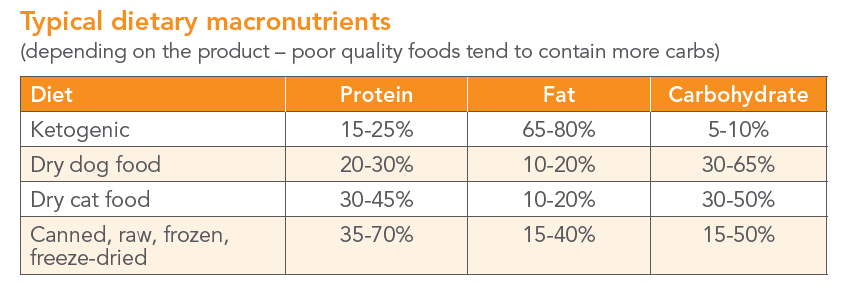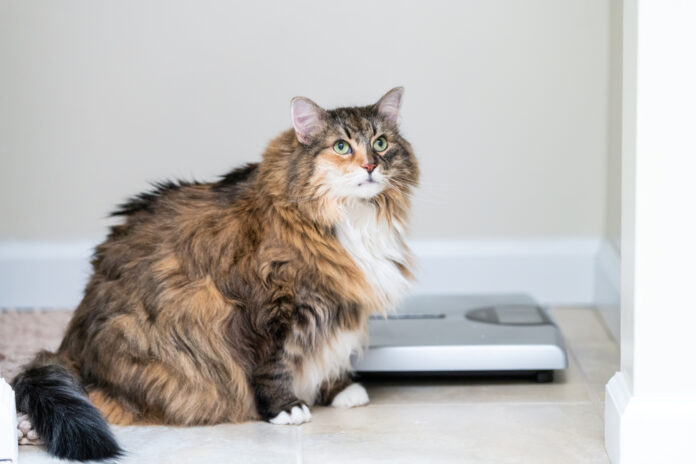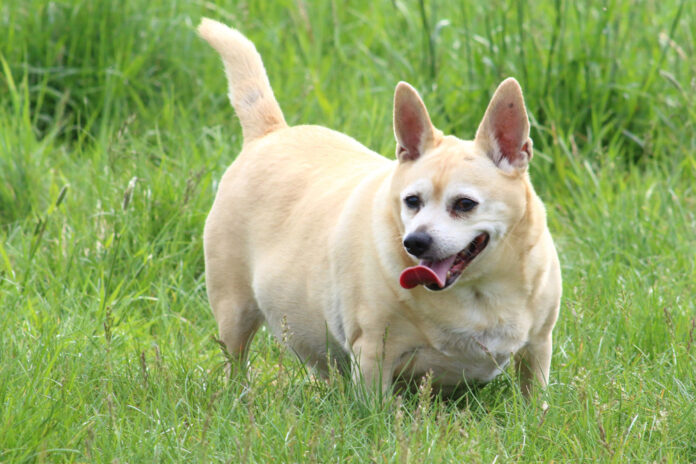Can a keto diet help dogs and cats with cancer?

Cancer is not only a genetic or inflammatory disease – it’s also a metabolic disease. A keto diet can starve cancer cells by targeting the metabolic characteristics of this dreaded disease.
Q: We’re hearing a lot about keto diets and their health benefits these days. What exactly is a ketogenic diet, and is there anything it can do for dog or cat that has cancer?
A: Cancer is afflicting a growing number of both dogs and cats. There are anti-cancer drugs, herbs and remedies galore, but an increasingly common strategy is to fight cancer with diet — specifically, a ketogenic (“keto”) diet.
Cancer has long been considered a genetic disease, but it is also an inflammatory and a metabolic disease. Diet has profound effects on both inflammation and metabolism. The ketogenic diet is aimed at the metabolic aspect of cancer proliferation.
The goal of a ketogenic diet is to restrict carbohydrates and promote the production of ketones, small molecules made in the liver by the breakdown of fat. This fat may come from diet, or from stored body fat. The resulting metabolic state is called ketosis. (This is not the same as ketoacidosis, a dangerous condition that can develop in diabetic animals.)
 Cancer as a metabolic disease
Cancer as a metabolic disease
In normal metabolism, cells burn glucose (sugar) for energy. A ketogenic diet “trains” normal cells to use ketones instead of glucose by severely restricting dietary carbs. And because protein can also be used by the body to manufacture glucose, through a process called gluconeogenesis (“creating new glucose”), protein is also moderately restricted.
Normal cells can make the shift from glucose to ketones. Even the brain — the body’s biggest consumer of glucose — can adapt to using ketones for much of its energy requirements. But cancer cells can’t. They depend on glucose fermentation to obtain the energy they need to grow and spread. Their abnormal metabolism prevents them from utilizing ketones the way normal cells can. The energy production of cancer cells is inefficient, so they need an enormous amount of glucose to function. The keto diet reduces the availability of glucose so that cancer goes hungry, but still provides plenty of fuel for healthy cells to carry on.
The effects of carbs on the body
Giving your dog or cat carbohydrates has several effects on his body. First and foremost, it stimulates the pancreas to release insulin, the hormone primarily responsible for glucose metabolism. It allows glucose from the blood to move into cells; and it promotes the storage of body fat from excess glucose. But high blood levels of insulin and glucose contribute to cancer development and growth.
When insulin shoves that excess glucose into body fat, the fat doesn’t just sit there. It is metabolically active, sending out cellular messengers that promote inflammation. Remember, cancer is also an inflammatory disease. Carbs set the stage for cancer development. The keto diet, however, promotes the burning of body fat for fuel while preserving muscle mass, and it reduces overall inflammation.
What keto is not
Contrary to popular opinion, keto is not a high-protein or typical raw meat diet. It is a high-fat, moderate-protein, low-carbohydrate plan. This is a common error you’ll see in magazines and all over the internet, and is made by people who don’t understand the science, and who equate keto with an Atkins-type low-carb diet.
A typical nutrient ratio is about 15% to 30% protein, 70% to 75% fat, and 5% to 10% carbohydrate. Contrast this with a typical commercial dry dog food, which contains around 20% to 30% protein, 10% to 20% fat, and 30% to 65% carbohydrate; or a similar dry cat food, which has about 30% to 45% protein, 10% to 20% fat, and 30% to 50% carbohydrate (see chart below). Canned, freeze-dried, dehydrated and frozen diets tend to have more protein and fat, but depending on the product, may still contain 15% to 50% carbohydrate. (You can estimate the carb content of a pet food by looking at the Guaranteed Analysis on the label. Subtract the protein, fat, fiber and moisture from 100; the remainder is digestible carbohydrate.)

Keto science
Ketogenic diets have been used and researched for decades, primarily to control epilepsy. Their use for cancer is relatively new. However, studies have offered tantalizing evidence of their benefits. In the 1990s, researchers at Colorado State University found that canine lymphoma was vulnerable to a low-carbohydrate diet. Further research has shown the same effect for many other types of cancer in both humans and animals, with rare exceptions.
One study found that a ketogenic diet stabilized advanced cancer in just four weeks; some patients even experienced partial remission. Other studies have found that even aggressive metastatic tumors respond to keto, thereby improving survival. Human studies have shown that keto diets benefit survival time and, perhaps more importantly, quality of life in cancer patients.
How to go keto
At this time, no commercial dog foods perfectly fit the ketogenic paradigm. Even the few “keto” recipes for pets are unbalanced, deficient or inaccurate. A general rule of thumb is to use a fat-to-protein ratio of 1.5:-2:1, with up to 15% of the diet comprised of cooked or pureed non-starchy vegetables, such as kale, broccoli, and green beans, to provide a variety of trace nutrients, fiber and inflammation-fighting antioxidants. Supplements, including calcium, are not optional.
Be sure to work closely with a veterinary oncologist and/or holistic practitioner when implementing keto for your dog or cat. Fortunately, fat tastes good, and most pets will enjoy the change.
Cautions when using a ketogenic diet
- Gastrointestinal signs (vomiting, diarrhea, constipation) may occur when starting a ketogenic diet, but usually dissipate as the body adapts to it.
- The ketogenic diet may be problematic in some cancer patients because it tends to produce weight loss. Cachexia (wasting) is a serious issue for these animals. Increasing healthy dietary fats may help offset any potential weight loss. The best options are Omega-3s like EPA and DHA — which themselves have anti-cancer effects — and oils like flaxseed, olive and avocado. Medium Chain Triglyceride (MCT) oil with low lauric acid (as opposed to plain coconut oil) is easy to digest and rapidly increases blood ketones; a nice double whammy.
- Dogs (and cats) who have eaten poor quality dry kibble most of their lives may be at risk for pancreatitis if they are switched too quickly to a high-fat diet. It takes a few weeks for cells to become fully fat-adapted. Unfortunately, time is something a lot of cancer patients don’t have; but any movement in the keto direction will be helpful. Cooked fats are especially dangerous, as are pro-inflammatory Omega-6s like corn, sunflower and safflower oils.
- The ketogenic diet is often used for children with severe epilepsy; about one in ten develop calcium oxalate bladder stones. This has not been studied or documented in dogs or cats, but drinking plenty of water is generally protective against bladder crystals and stones.
A ketogenic diet may be useful for preventing as well as helping treat cancer, and the benefits of this dietary approach in terms of overall health, energy and weight maintenance are certainly worth pursuing.




